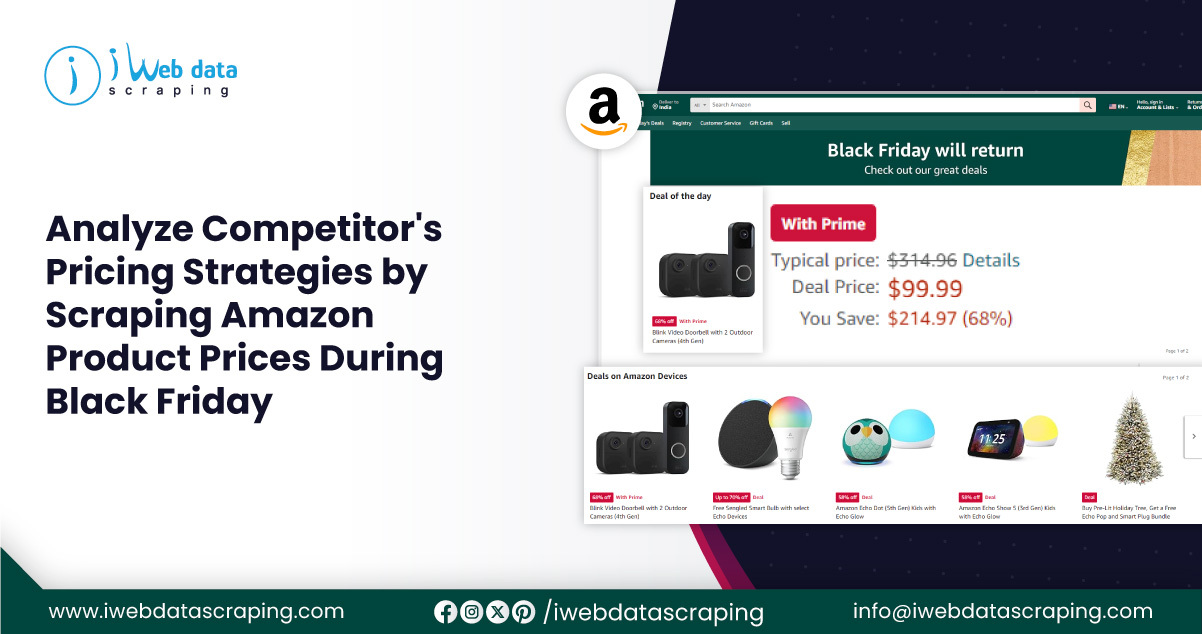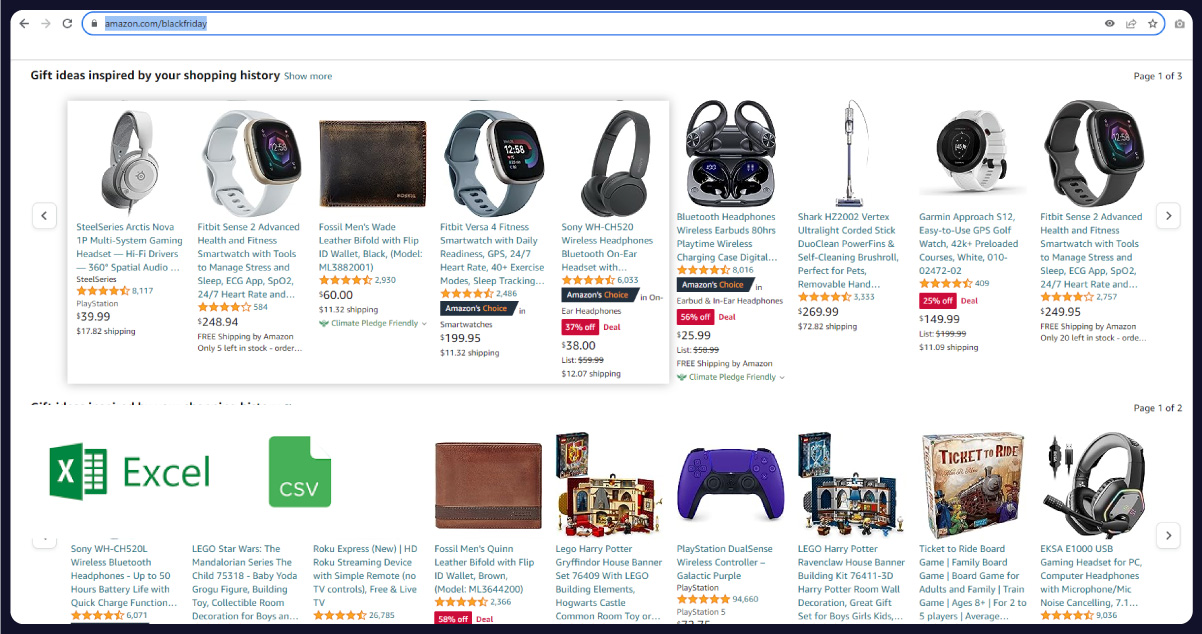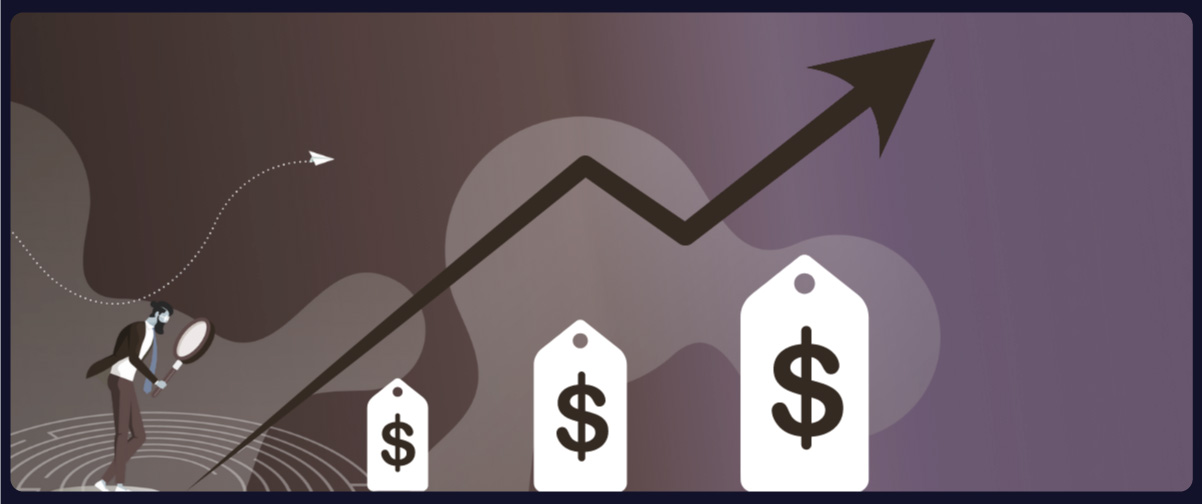Analyze Competitor’s Pricing Strategies By Scraping Amazon Product Prices During Black Friday
Analyze Competitor’s Pricing Strategies By Scraping Amazon Product Prices During Black Friday

With Black Friday approaching, retailers are actively promoting their early deals, making it crucial to ensure that your pricing remains the most attractive among competitors. One effective strategy is closely monitoring and adjusting your prices based on the market by scraping e-commerce data.
To facilitate this process, consider utilizing iWeb Data Scraping, a no-code data scraper that enables users to collect product prices from Amazon and stay competitive effortlessly. This user-friendly tool allows for easy Amazon data extraction from web pages, making it accessible to individuals without advanced coding skills. By staying informed about your rivals’ prices, you can optimize your pricing strategy and better appeal to customers during this competitive shopping season.
Significance of Monitoring Amazon Product Prices
The significance of monitoring prices on Amazon is rooted in the platform’s status as one of the largest e-commerce hubs globally. With an extensive array of product listings, Amazon is a colossal database for comprehensive market research. It encompasses a wide range of products, providing valuable information on various aspects such as product size, materials, textures, and, most importantly, pricing.
Particularly during events like Black Friday, Amazon’s influence is noteworthy. In 2021, Amazon emerged triumphant by securing 16.7% of all sales during the shopping frenzy. Amazon took an early lead this year by initiating Black Friday deals in October through the Prime Early Access Sale. Notably, the Black Friday sales stretch over more than a month, presenting an extended window for potential repricing of products.
Given the competitive nature of Black Friday and the prolonged duration of sales, the likelihood of product repricing during this period is significantly higher. It underscores the critical importance of actively monitoring prices. For businesses aiming for success, having a keen awareness of Amazon pricing fluctuations becomes beneficial and imperative. Through vigilant pricing monitoring using e-commerce data scraping services, businesses can strategically adjust their pricing, ensuring they remain competitive and appealing to consumers amid the dynamic landscape of Black Friday sales.
Steps Involved in Scraping Amazon Product Prices

Scraping Amazon product prices during Black Friday using a no-code scraper involves few steps. Please note that web scraping may violate the website’s terms of service, and reviewing and complying with them is essential. Here’s a general overview:
- Choose a No-Code Scraping Tool: Go to iWeb Data Scraping and select the Amazon Scraper from a list of scrapers that require minimal coding skills.
- Open the Tool and Create a New Project: Launch the tool and create a new project to scrape Amazon product prices.
- Enter the Amazon URL: Input the URL of the Amazon product page from which you want to scrape prices.
- Use Point-and-Click Interface: No-code scrapers usually come with a point-and-click interface. Use this interface to select the elements on the page containing the product prices. It involves pointing to the data you want to scrape and letting the tool identify and extract it.
- Configure Pagination: If the product prices are across multiple pages, configure pagination settings to navigate different pages and scrape prices from each.
- Set Up Data Extraction: Define the data extraction rules within the tool. It involves specifying how the scraper should identify and extract product prices, ensuring accuracy and consistency.
- Run the Scraper: Start the scraping process. The scraper will navigate the Amazon product pages, extract the specified data, and compile it.
- Review and Refine: Review the extracted data after the scraping. If necessary, refine your scraping rules to improve accuracy and address any issues.
- Export Data: This tool allows you to export the scraped data in various formats, such as CSV or Excel. Export the data for further analysis or use.
- Schedule Regular Scraping (Optional): The tool allows you to schedule regular scraping sessions. Consider scheduling automated scrapes at specific intervals if you need updated pricing information.
- Comply with Amazon’s Terms of Service: Ensure that your scraping activities comply with Amazon’s terms of service. Scraping may be against the terms, which could lead to legal consequences or account suspension.
Optimizing Pricing Through Product Variants:

The pricing of a product depends on a multitude of factors, including size, material, texture, and brand. Leveraging the scraped data enables a thorough analysis, offering insights into monitoring the prices of different product variants based on specific attributes. For example, by comparing prices of mugs of the same size but different brands, you can pinpoint which brands establish the highest and lowest prices. Incorporating additional details like colors and materials enhances the depth of analysis, allowing for strategic pricing decisions that can significantly boost sales.
Dynamic Pricing Strategies Over Time:

Monitoring price fluctuations over a specific period is crucial for adapting to market dynamics. It is especially relevant during extended events like Black Friday deals on Amazon, where competitors may initially set higher prices before implementing discounts to attract attention. Regularly scraping price data and conducting horizontal analysis provides a real-time understanding of these changes. Grouping products by brands offers an alternative perspective, enabling observation of evolving price trends for products under the same brand. This nuanced approach aids in developing a targeted pricing plan to ensure sustained competitiveness in the dynamic market.
Comprehensive Market Insight Beyond Amazon:

While Amazon is a valuable source, expanding data scraping efforts to other e-commerce platforms provides a more holistic view of market dynamics. Data scraping goes beyond names and prices, encompassing detailed product information such as sizes, shelf life, producers, reviews, sales numbers, and popularity indicators like watches. Extracting data from diverse platforms enhances understanding, allowing you to identify attractive pricing strategies based on a broader dataset. This multi-platform approach empowers you to position your products competitively across various online marketplaces, maximizing market reach and effectiveness.
What Can You Gain By Comparing Competitor Prices on Amazon During Black Friday?
Analyzing and comparing competitor prices on Amazon during Black Friday offers businesses many advantages. One of the primary benefits is the ability to formulate a competitive pricing strategy. By closely monitoring how competitors are pricing their products, businesses can make informed decisions on adjusting their prices to remain competitive while maximizing profitability. This strategy not only attracts price-sensitive customers but also helps in strategically positioning products in the marketplace.
Moreover, understanding competitor pricing allows businesses to optimize discounts during the Black Friday sales. By identifying the optimal discount percentages, companies can balance attracting customers with attractive deals and maintaining healthy profit margins. This insight also facilitates strategic discounting, enabling businesses to offer compelling promotions that stand out amidst the Black Friday noise.
Monitoring competitor prices is instrumental in attracting customers to your Amazon store. Offering prices slightly lower than competitors can be a powerful magnet, leading to increased sales volume and a larger market share. Additionally, this practice provides valuable insights into market trends and customer expectations. By aligning pricing with current market demands, businesses can stay ahead of trends and adapt their strategies accordingly.
Comparing competitor prices also aids in enhancing overall value propositions. Suppose a business finds itself in a price-competitive situation. In that case, it can emphasize other aspects of its offerings, such as superior product quality, excellent customer service, or unique features, to differentiate itself from the competition.
Furthermore, this analysis assists in optimizing promotional strategies and understanding how competitors structure their promotions, whether through bundled deals or percentage discounts, allowing businesses to fine-tune their promotional efforts for maximum impact. It also facilitates better inventory management, helping businesses adjust stock levels based on observed competitor pricing and potential shifts in demand.
In the fast-paced world of Black Friday sales, real-time decision-making is crucial. Regularly comparing competitor prices enables businesses to make agile and data-driven decisions, ensuring they can quickly adjust their pricing strategy in response to dynamic market conditions. In summary, the insights from comparing competitor prices on Amazon during Black Friday empower businesses to craft effective strategies that attract customers, maximize profits, and navigate the competitive landscape with agility and intelligence.
#ScrapingAmazonProductPricesDuringBlackFriday,
#AmazonScraper,
#ScrapeAmazonProductPricesDuringBlackFriday,
#ExtractAmazonProductPricesDuringBlackFriday,
#AmazonProductPricesdataextractor,
#Amazonproductpricescrapingtool,
#AmazonPricesdataextension,
